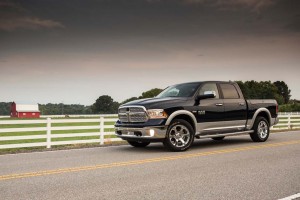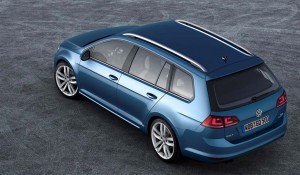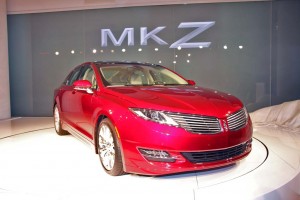While a number of key automakers have yet to formally release their sales numbers, preliminary data suggest that March will see the highest level of U.S. car and truck sales in nearly six years.
Preliminary indications suggest that sales will average out to an annualized rate of as much as 15.6 million – well above current industry forecasts for all of 2013 – and the best total since December 2007, just before the U.S. auto market plunged into its worst downturn since the Great Depression.
The strong March performance appears to reflect a variety of factors, including the availability of a number of new and well-reviewed products, pent-up demand, low interest rates and even tax-refund checks. At the same time, analysts suggest that makers continue reeling buyers into their showrooms despite cutting back on incentives and boosting prices on many models.
“Manufacturers continue to benefit from consumers’ insatiable appetite for highly contented new vehicles, as shown by average transaction prices exceeding $31,000 in March,” said Jesse Toprak, senior analyst for TrueCar. “Coupled with flat incentives spending and higher volume, near-record transaction prices herald positive earnings news for the industry.”
The pace of growth actually declined slightly from recent months, when overall industry volumes were jumping at double-digit levels. Nonetheless, March is likely to lead many planners to boost their forecasts for the year as a whole. The general consensus has been running between 15.1 million and 15.5 million cars, trucks and crossover, including both retail and fleet sales.
General Motors posted some of the biggest gains among those reporting by mid-Tuesday morning, its overall March sales surging by 6%, year-over-year. The largest of the domestic makers was up 4% on the retail side, with fleet sales gaining 12%.
“GM delivered its best March sales in five years thanks to a strengthening economy and new products, and we are expecting our third consecutive increase in market share versus last year,” said Kurt McNeil, vice president of U.S. sales operations. “Sales of smaller cars have been robust for some time. Trucks have improved in lockstep with the housing market and the strength of the crossover market signals that America’s families are more confident about their financial health.”
Ford was also up a reported 6% for the month – and would have done even better were it not for the struggles of its Lincoln division. The luxury brand has suffered from an unexpectedly laborious ramp-up of production for its new MKZ sedan, a conscious choice by Ford aimed at heading off some of the quality problems suffered by other, more mainstream 2013 models.
Production of the MKZ is now approaching “launch levels,” Ford global marketing director Jim Farley tells TheDetroitBureau.com, but that didn’t happen soon enough to forestall another 23% dip by Lincoln in March.
The nation’s smallest domestic producer, Chrysler, posted a 5% gain, yielding its best month since December 2007 – and marking its 36th consecutive monthly increase. The Fiat, Dodge and Ram Truck brands all reported gains, the latter gaining 24% on strong demand for the new Ram 1500 pickup.
The Chrysler brand, however, dipped 2% and Jeep was off 15%. But the SUV brand’s dip was anticipated due to a major shift in production as the Liberty model was dropped while a factory in Toledo, Ohio is converted for the replacement, renamed the Jeep Cherokee.
Volkswagen, which has been on a roll with a mix of new products and the added availability offered by its still-new plant in Chattanooga, reported a 3.1% increase in March sales.
“Last month marked our 31st consecutive month of year-over-year sales increases and our strongest March in 40 years,” said Jonathan Browning, president and CEO, Volkswagen Group of America, Inc. “While we are cautious in terms of economic outlook, we expect to see continued growth at a moderate pace in the months ahead.”
Among foreign makers, Nissan gained just 1% in March – but that was still enough to give the maker its best month ever in the U.S. market. Significantly, its new Altima model has begun to pick up traction after a slower-than-anticipated launch last year.
Equally important for the Japanese maker, its little battery-electric model, the Nissan Leaf, had its best-ever month, at 2,236 sales, thanks to the introduction of a new, lower-priced model being built at a new plant in Smyrna, Tenn. That figure substantially exceeded the volume signaled by Nissan Motor Co. CEO Carlos Ghosn just last week.
The world’s best-selling automaker managed to maintain positive momentum for March, though Toyota reported a relatively modest 1% gain of its own. But that was enough to keep company executives pleased with the market’s pace of growth.
“The auto industry continued its string of impressive monthly results, and at Toyota we had our best month since Cash for Clunkers in August of 2009,” said Bob Carter, senior vice president of automotive operations, Toyota Motor Sales, USA, Inc. “A strong first-quarter close and increased consumer confidence continue to position the auto industry as a leader in the economic recovery.”
What’s behind the strong sales surge is a matter of debate, though a variety of factors appear to be at work – and the impact of Washington’s so-called sequester appears to have little impact on rising consumer sentiment. There is little doubt, analysts and industry planners agree, that the market is still benefiting from strong pent-up demand after years of unusually low sales. The first big flood of tax refunds may also have added to the market momentum. Meanwhile, automotive credit has not only become more widely available to sub-prime buyers but interest rates remain at or near historic lows.
That may help offset the decline in incentives offered by most makers. On the whole, they declined by 1.7% from March 2012, to $2,523 per vehicle. Honda cut its incentives by 31%, to $1,531. Hyundai and sibling Kia were among the few makers to increase incentives – by 10.6%, to an average $1,369, still the industry’s lowest.
Meanwhile, Average Transaction Prices – what consumers actually spend after factoring in both options and incentives on top of sticker prices – climbed to $31,087, approaching an industry record and an increase of 1.1% since March 2012.



